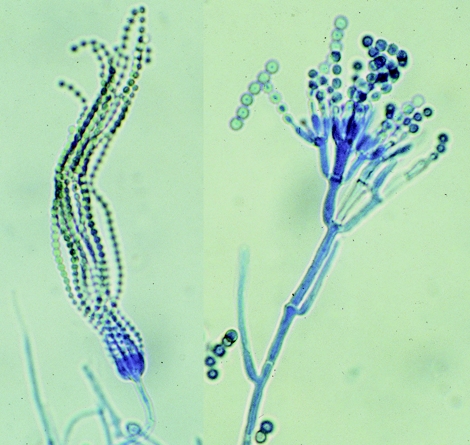Paraquat is a very lethal pesticide that requires sime pretty heavy level of protective gear if it is to be used. It's an old pesticide and there are many newer ones that are much safer to use. Here's an example of the power of fungi to neutralize this chemical. Fungi are nature's chemical that shows the power that they have. And we also need to be careful around some of these fungi. They are found to colonize all sorts of things. Penicillium is a common mold on fruit. This one lives in the sea.
Biologically active compounds from the marine fungus Penicillium dimorphosporum protect cells from paraquat, the highly toxic herbicide with no remedy, and might enhance the action of some drugs. The fungus was isolated from soft coral collected in the South China Sea during an expedition on the Akademik Oparin research vessel. Scientists of Far Eastern Federal University (FEFU) and G. B. Elyakov Pacific Institute of Bioorganic Chemistry reported the results in Marine Drugs.
Paraquat a herbicide compound highly toxic for animals and humans. About a hundred countries, including the United States, apply it for crop cultivation and weed control. Dozens of countries, including Russia, have banned the poisonous compound. The problem of paraquat harm to people is widely known in India. Farmers who work in the fields risk dying because of getting a dangerous dose of the substance.
FEFU specialists, together with Russian and foreign colleagues, have found out that compounds from the marine-derived fungus Penicillium dimorphosporum might protect the cells against the effects of paraquat. The experiment was carried out on a neuroblastoma cell line. By origin, these are tumor cells adopted for studying the neuroprotective activity of forthcoming drugs.
"At a very low concentration, about one micromole per liter, the compounds fortified the viability of cells treated with paraquat by almost 40 percent compared to cells treated with paraquat alone. As a further step, we want to clarify the mode of action of these protecting natural molecules. Perhaps they act as antioxidants, and, probably, they can also secure cells from other toxic substances," said Olesya Zhuravleva, Head of the Laboratory of Biologically Active Compounds at the FEFU School of Natural Sciences.
According to the scientist, many active natural compounds have the disadvantage of low production in the host-organism, so their quantity is not enough for the in-depth study.
The case of Penicillium dimorphosporum is no exception. The fungus does not synthesize active compounds galore. However, scientists noticed an interesting feature of the fungus metabolism, which might help to get over this limitation. The point is the sea mold produces a broad range of isomeric compounds, as well as their biogenetic precursor. That means they have the same elements in the composition but differently structured. It looks like a kind of natural crooked mirror, where the set of atoms is reflected many times, and in different ways. That provides the compounds with different functions and the scientists with the chance to modify them. Usually, the synthesis of a large number of isomers is not typical for living organisms.
"In this regard, we plan to scrutinize not the active natural compound itself, but its precursor synthesized by fungus abundantly, which we can modify up to the active state. That would be a successful step because the minor substance is much more difficult to get from a natural source than to adapt one's major inactive precursor. For example, the fungus produces 200 milligrams of an inactive compound that we can customize and as little as six milligrams of an active natural substance. Many medicinal compounds are obtained in a similar semi-synthetic way, which allows avoiding complex and expensive complete synthesis," said Olesya Zhuravleva.
Next, the scientists plan to study in detail the neuroprotective mechanism of the selected active compounds, as well as prospects of using them in a combination with other existing compounds. According to the hypothesis, active molecules of the sea fungus might enhance the effect of some known drugs.
###
The study was supported by the grant of the Russian Science Foundation (project 19-74-10014). In the research took part collaborators from Far Eastern Federal University, G.B. Elyakov Pacific Institute of Bioorganic Chemistry (PIBOC FEB RAS), Institute of Chemistry FEB RAS, University Medical Center Hamburg-Eppendorf (Germany), and the Vietnam Academy of Sciences and Technologies (Nhatrang Institute of Technology Research and Application).
Media Contact
Alexander Zverev
zverev.ase@dvfu.ru
84-956-907-816
A delicate Penicillium, although not the one spoken of here. Dr David Ellis, University of Adeliade
